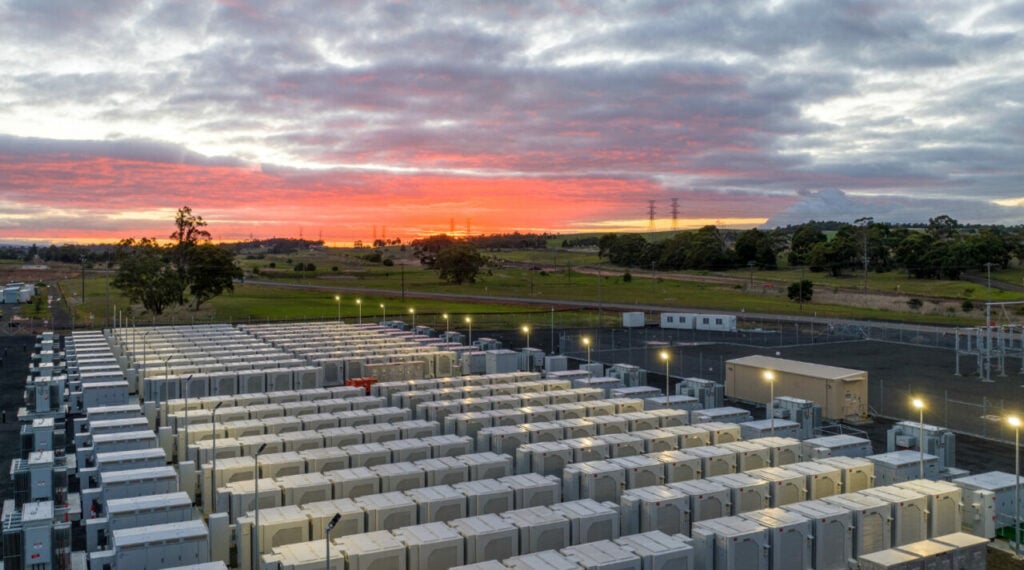
Andy Colthorpe takes soundings from key energy storage market players on their predictions for the industry in 2024, following a year of significant progress in 2023.
This is an extract of a feature article that originally appeared in Vol.38 of PV Tech Power, Solar Media’s quarterly journal covering the solar and storage industries. Every edition includes ‘Storage & Smart Power’, a dedicated section contributed by the Energy-Storage.news team, and full access to upcoming issues as well as the nine-year back catalogue are included as part of a subscription to Energy-Storage.news Premium.
Enjoy 12 months of exclusive analysis
- Regular insight and analysis of the industry’s biggest developments
- In-depth interviews with the industry’s leading figures
- Annual digital subscription to the PV Tech Power journal
- Discounts on Solar Media’s portfolio of events, in-person and virtual
As each year draws to a close, Energy-Storage.news approaches a select few industry figures for their views on the 12 months just gone and the year ahead as part of our annual ‘Year in Review’ series.
Here are some quotes from the industry representatives we heard from this time around, as 2023’s big year for energy storage ended and we welcomed 2024 with cautious optimism.
What did 2023 mean for the energy storage industry, both from your own company’s perspective and in bigger-picture terms?
The energy storage industry has continued to grow in 2023 – both in terms of the number and size of projects. Despite this growth, several important hurdles – including the rise in global interest rates – have held the US industry back. Projects are expected to be delayed into 2024 and beyond due to changes in local regulations, uncertainty around how policies like the Inflation Reduction Act/Green Deal will be implemented, and the market looking for stability in interest rates.
Andy Tang, head of Wärtsilä Energy Storage & Optimisation
Have supply chain constraints eased in 2023 and what sort of supply chain dynamics are you seeing in the industry going forward?
The supply chain disruptions caused by the COVID-19 pandemic have been mostly resolved, and their resolution is coinciding with an ease in demand for EVs, which means there is more lithium carbonate available to devote to energy storage projects.
On the battery front, more manufacturers are coming into large scale battery production, first spurned by the EV market and now into the energy storage space. That is a good thing for the energy storage projects: there is physically more supply coming off production lines and there is more innovation in energy density and safety features as manufacturers work to keep up and exceed each other.
Ray Saka, VP of business strategy and services, IHI Terrasun
The challenges we face in the supply chain continue to be diverse. The biggest bottleneck encountered in battery storage projects is still the long delivery times for high-voltage components, especially HV-transformers. This bottleneck is affecting projects throughout the industry and has increased further due to the strong expansion momentum.
At the same time, there are encouraging signs that the market for battery components, including modules, containers, inverters and switchgear, is easing. Delivery times for these crucial elements have normalized again to less than 12 months, depending on the size of the project. This easing of the market promises greater flexibility in the planning and implementation of our projects.
Florian Antwerpen, managing director, Kyon Energy
What are some major trends in energy storage technologies that readers should keep an eye out for?
Lithium-ion. No, for real. In the solar sector in the mid-2000s, there were about a dozen competing technologies that triggered investment and media, but they all lost to the basic solar photovoltaic technology. Solar PV started getting deployed, creating an unstoppable feedback loop of incremental efficiency gains and supply chain consolidation. Over a 15-year timeline, that combination dominated the market.
It’s the same now with lithium-ion. Don’t get me wrong, there are some really exciting technologies out there and I wish everyone the best but look at cost curves. It’s going to take a lot of time for the new entrants to come to the market in a truly cost competitive way.
It’s not sexy and doesn’t get clicks – but watch and report on the incremental lithium-ion gains on the density and efficiency side. Pay attention to what’s boring – that is what is going to have a big impact.
Jeff Bishop, CEO, Key Capture Energy
What should the industry’s main priorities be in 2024?
Education. Education. Education. As we talked about in our interview with Energy-Storage.news at RE+ last year, positive engagement with authorities having jurisdiction (AHJs) is vital for success in the US battery storage industry. We need to continue educating the AHJs on each project we’re building and the change in technologies and what that means for their first responders.
Adam Bernardi, director of renewables sales and strategy, and Chris Ruckman, vice president of energy storage, Burns & McDonnell
To take full advantage of the opportunity storage systems present, there are several challenges we must look to address in the coming year. Firstly, we urgently need a paradigm shift in the political and regulatory community on every level to acknowledge the importance of storage. A key component to this is increasing the number of studies that emphasise the cost benefits and flexibility advantages of storage systems, especially to political decision-makers.

We also need political regulation to grant storage systems priority access to the grid and creation of market environments that offer many different applications such as wholesale trading, frequency and non-frequency ancillary services and capacity markets so that it becomes a more economically attractive venture to storage developers. The regulations in the European Renewable Energy Directive (RED III), as well as the planned approval of the new Energy Market Design, are steps in the right direction.
There must also be a concerted effort to get communities on board with storage systems. Community acceptance is a pivotal part of the success of any renewable energy solution. Although concerns must be taken seriously, these can be mitigated by planning, executing and operating projects to the highest social, technical and environmental standards.
Julian Gerstner, head of storage, Baywa r.e.
Congratulations on being recognised for your Outstanding Contribution to the industry at the Energy Storage Awards 2023. What does being part of this industry mean to you, personally and professionally?
It has always been and remains a privilege to work with one of the most important asset classes there is within the transition to a low carbon society. I’ve been a renewable energy investor for many years and energy storage is the most complex and rewarding technology I’ve come across in what it can achieve to move us towards a sustainable future.
It gives me a huge amount of satisfaction in my daily working life to be surrounded by dedicated, knowledgeable and passionate colleagues using their talents to drive energy storage forward on a global scale.
Alex O’Cinneide, founder and CEO, Gore Street Capital
This is an extract of a feature article that originally appeared in Vol.38 of PV Tech Power, Solar Media’s quarterly journal covering the solar and storage industries. Every edition includes ‘Storage & Smart Power’, a dedicated section contributed by the Energy-Storage.news team, and full access to upcoming issues as well as the nine-year back catalogue are included as part of a subscription to Energy-Storage.news Premium.

